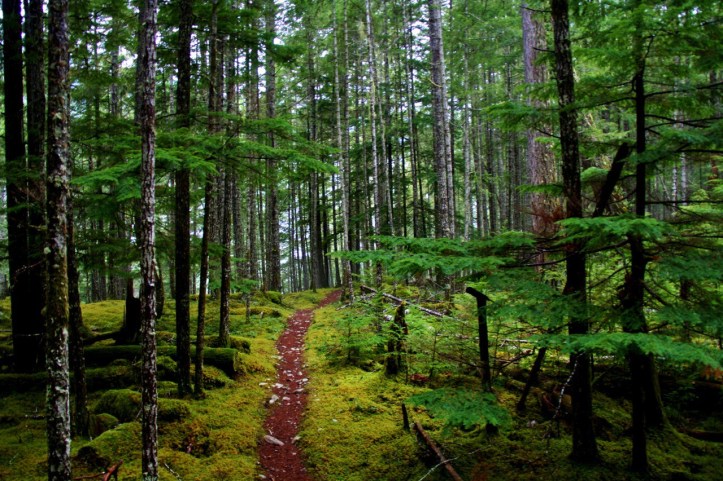
In 1976, when I was nine years old, my maternal grandparents moved to Port Angeles, Washington from Madison, Wisconsin to retire. They lived there for 23 years, and I visited 25 times. I love everything about the Olympic National Park there, from the misty rugged coastlines, to the towering moss-covered rain forests, to the glacier crowned mountain peaks (though the glaciers have receded greatly in the past 42 years since my first visit).
My Grandma and Grandpa Youmans had a small home on the edge of Port Angeles with wonderful picture windows looking out over a meadow surrounded by forests composed mainly of Douglas Fir, and they had a modest guest house that was filled with family and friends more often than it was not, especially during the summer months. They had an incredible garden and friends with incredible gardens, and my grandma could cook with the very best. My 25 visits to be with them in this natural paradise were some of the most beautiful times of my life.
The thing I enjoyed more than anything else when I visited was to spend time walking in the forest around their home. For a southwest Oklahoma boy where some of the post oak trees don’t grow much taller than a person, walking among those trees was like being in a majestic natural cathedral. I spent hours walking in those forests, looking up over and over again, and on one occasion my near constant gaze at the trees led to an unfortunate encounter with stinging nettles. Stinging nettles aside, those forest strolls and hikes were like spirit food for me, and I still have vivid and joyous memories of them to this day.
As amazing and awe-inspiring as my visits to the Pacific Northwest were, I also had some deeply disturbing experiences there. On my first visit to this Olympic Peninsula paradise at the age of nine, I saw where a forest had been clear-cut. It was a like a gut punch to my soul. I was certainly old enough to understand that we used trees for many things – wood for homes, furniture, and paper (there were two paper mills in Port Angeles at that time). I understood that people cut trees down for these purposes, but this understanding did not prepare me for violence of a clear cut.
In some of my early visits, I got to see first hand an area of mature forest right next to my grandparents’ property be clear-cut. Each day of those visits was met by the sounds of machinery and saws as the forest was systematically wiped out in front of my horror-stricken eyes. This description is not an exaggeration of what I felt at the time. I was struck by horror seeing what we human beings were doing to this once vibrant and alive forest as it was reduced to lifeless stumps in the dirt. Even as a young boy, perhaps especially because I was so young, I knew that there was something deeply wrong with what we were doing to these forests.
My sense of outrage was deepened during one of those early visits when we took a tour of one of the paper mills, and I watched the process by which these majestic trees became paper. Ever since that day, I have never been able to use paper produced from trees without some sense of guilt for doing so. That trip to the paper mill was not as horrifying as my first tour through a hog killing factory two decades later, but it nonetheless made its mark on my spirit.
My sadness about what we were doing to the forests became more pronounced each year I would visit my grandparents. Each time I would fly into Seattle, I would see from my plane window more and more blocks of forest that had been clear-cut since my visit the year before. It was a sight that sickened me.
This sickness of my soul in the face of these clear cuts is one of the key experiences of my life that led me to become concerned about our natural environment, the ecological community of which we are all members. Witnessing the destruction of the forests in Washington led me to learn about deforestation throughout the world. Learning about the deforestation throughout the world led me to learn more about the other deeply intertwined ways that we as a human community are exploiting and desecrating our ecological community.
The gut punch to my nine-year old soul in the face of a horrifying clear-cut became a kind of seed that grew into a forest of desire to do something to save, renew, and regenerate our ecological community. It is a seed that has grown into a calling to care for all creation, a calling that I have answered imperfectly, but to which I feel compelled to keep trying so that this precious planet, our only home, might somehow experience healing.
Outstanding read. Touched my heart and soul!
Douglas Fir is such a majestic tree as are the Great Redwoods. The Pacific coastline is in a class of its own and the thought of continuing to destroy the beautiful trees and environment is as alarming today as it was in the sixties when activists chained themselves to the trees and set up camp in the tops of the trees to prevent the lumber companies from cutting them down.